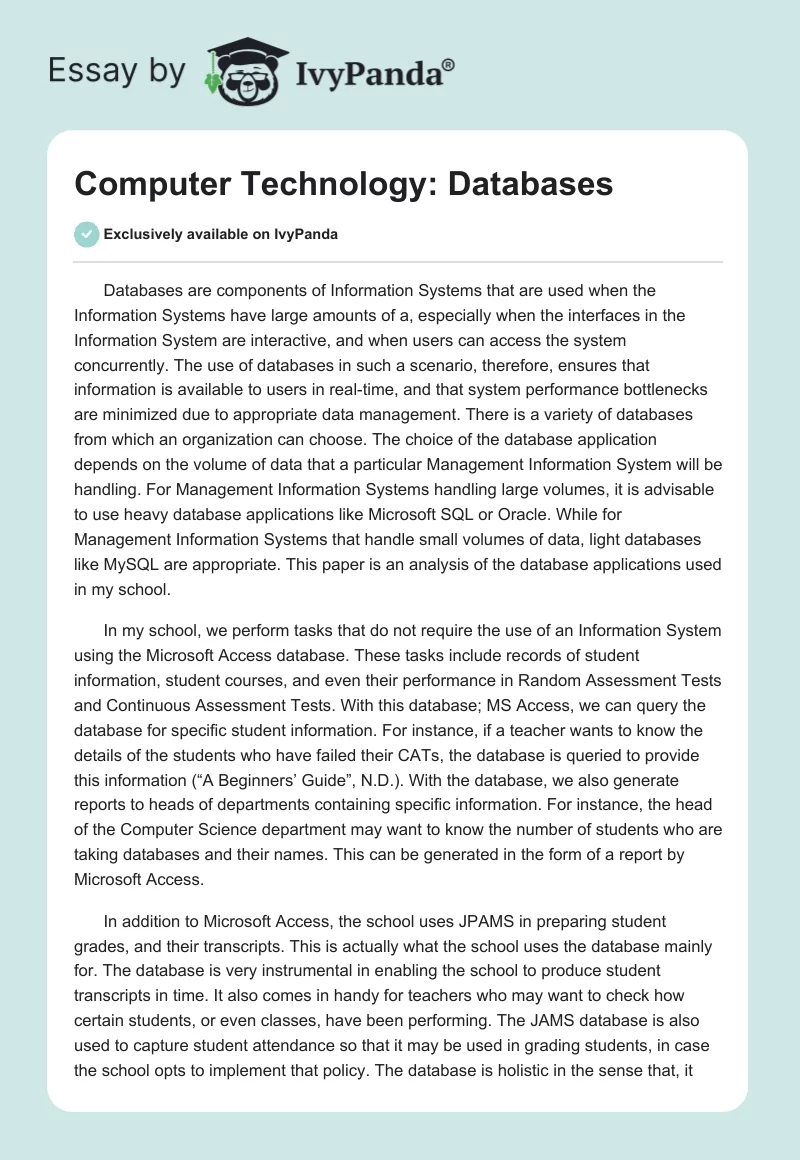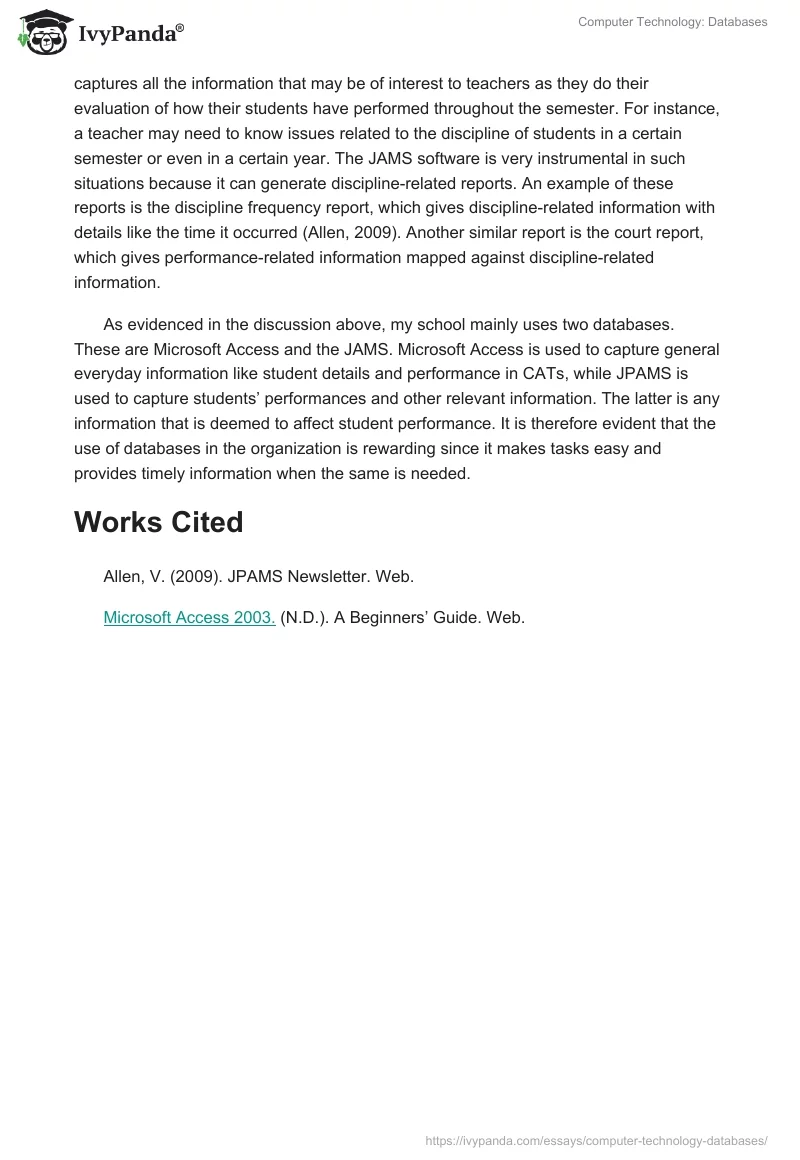Databases are components of Information Systems that are used when the Information Systems have large amounts of a, especially when the interfaces in the Information System are interactive, and when users can access the system concurrently. The use of databases in such a scenario, therefore, ensures that information is available to users in real-time, and that system performance bottlenecks are minimized due to appropriate data management.
There is a variety of databases from which an organization can choose. The choice of the database application depends on the volume of data that a particular Management Information System will be handling. For Management Information Systems handling large volumes, it is advisable to use heavy database applications like Microsoft SQL or Oracle. While for Management Information Systems that handle small volumes of data, light databases like MySQL are appropriate. This paper is an analysis of the database applications used in my school.
In my school, we perform tasks that do not require the use of an Information System using the Microsoft Access database. These tasks include records of student information, student courses, and even their performance in Random Assessment Tests and Continuous Assessment Tests. With this database; MS Access, we can query the database for specific student information. For instance, if a teacher wants to know the details of the students who have failed their CATs, the database is queried to provide this information (“A Beginners’ Guide”, N.D.). With the database, we also generate reports to heads of departments containing specific information. For instance, the head of the Computer Science department may want to know the number of students who are taking databases and their names. This can be generated in the form of a report by Microsoft Access.
In addition to Microsoft Access, the school uses JPAMS in preparing student grades, and their transcripts. This is actually what the school uses the database mainly for. The database is very instrumental in enabling the school to produce student transcripts in time. It also comes in handy for teachers who may want to check how certain students, or even classes, have been performing. The JAMS database is also used to capture student attendance so that it may be used in grading students, in case the school opts to implement that policy. The database is holistic in the sense that, it captures all the information that may be of interest to teachers as they do their evaluation of how their students have performed throughout the semester. For instance, a teacher may need to know issues related to the discipline of students in a certain semester or even in a certain year.
The JAMS software is very instrumental in such situations because it can generate discipline-related reports. An example of these reports is the discipline frequency report, which gives discipline-related information with details like the time it occurred (Allen, 2009). Another similar report is the court report, which gives performance-related information mapped against discipline-related information.
As evidenced in the discussion above, my school mainly uses two databases. These are Microsoft Access and the JAMS. Microsoft Access is used to capture general everyday information like student details and performance in CATs, while JPAMS is used to capture students’ performances and other relevant information. The latter is any information that is deemed to affect student performance. It is therefore evident that the use of databases in the organization is rewarding since it makes tasks easy and provides timely information when the same is needed.
Works Cited
Allen, V. (2009). JPAMS Newsletter. Web.
Microsoft Access 2003. (N.D.). A Beginners’ Guide. Web.


